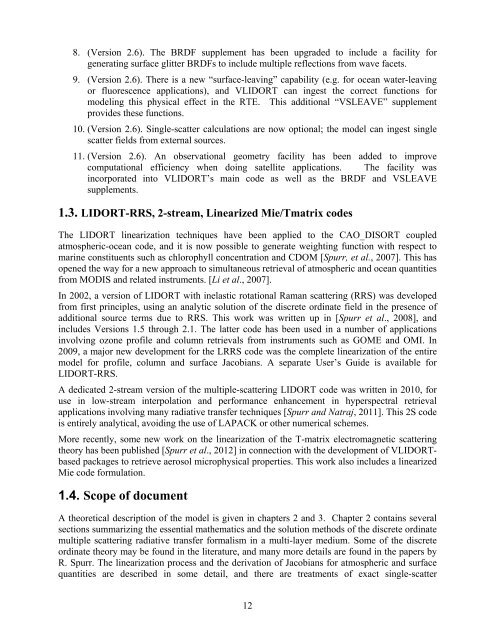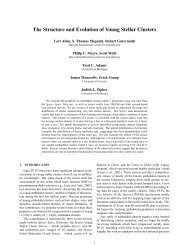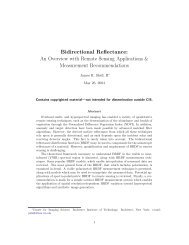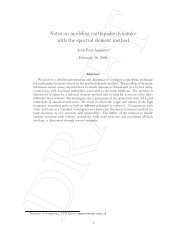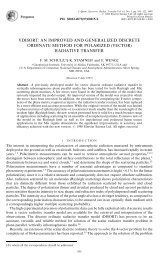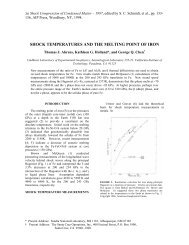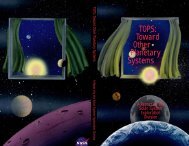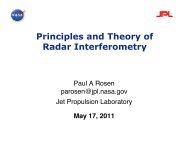VLIDORT User's Guide
VLIDORT User's Guide
VLIDORT User's Guide
Create successful ePaper yourself
Turn your PDF publications into a flip-book with our unique Google optimized e-Paper software.
8. (Version 2.6). The BRDF supplement has been upgraded to include a facility forgenerating surface glitter BRDFs to include multiple reflections from wave facets.9. (Version 2.6). There is a new “surface-leaving” capability (e.g. for ocean water-leavingor fluorescence applications), and <strong>VLIDORT</strong> can ingest the correct functions formodeling this physical effect in the RTE. This additional “VSLEAVE” supplementprovides these functions.10. (Version 2.6). Single-scatter calculations are now optional; the model can ingest singlescatter fields from external sources.11. (Version 2.6). An observational geometry facility has been added to improvecomputational efficiency when doing satellite applications. The facility wasincorporated into <strong>VLIDORT</strong>’s main code as well as the BRDF and VSLEAVEsupplements.1.3. LIDORT-RRS, 2-stream, Linearized Mie/Tmatrix codesThe LIDORT linearization techniques have been applied to the CAO_DISORT coupledatmospheric-ocean code, and it is now possible to generate weighting function with respect tomarine constituents such as chlorophyll concentration and CDOM [Spurr, et al., 2007]. This hasopened the way for a new approach to simultaneous retrieval of atmospheric and ocean quantitiesfrom MODIS and related instruments. [Li et al., 2007].In 2002, a version of LIDORT with inelastic rotational Raman scattering (RRS) was developedfrom first principles, using an analytic solution of the discrete ordinate field in the presence ofadditional source terms due to RRS. This work was written up in [Spurr et al., 2008], andincludes Versions 1.5 through 2.1. The latter code has been used in a number of applicationsinvolving ozone profile and column retrievals from instruments such as GOME and OMI. In2009, a major new development for the LRRS code was the complete linearization of the entiremodel for profile, column and surface Jacobians. A separate User’s <strong>Guide</strong> is available forLIDORT-RRS.A dedicated 2-stream version of the multiple-scattering LIDORT code was written in 2010, foruse in low-stream interpolation and performance enhancement in hyperspectral retrievalapplications involving many radiative transfer techniques [Spurr and Natraj, 2011]. This 2S codeis entirely analytical, avoiding the use of LAPACK or other numerical schemes.More recently, some new work on the linearization of the T-matrix electromagnetic scatteringtheory has been published [Spurr et al., 2012] in connection with the development of <strong>VLIDORT</strong>basedpackages to retrieve aerosol microphysical properties. This work also includes a linearizedMie code formulation.1.4. Scope of documentA theoretical description of the model is given in chapters 2 and 3. Chapter 2 contains severalsections summarizing the essential mathematics and the solution methods of the discrete ordinatemultiple scattering radiative transfer formalism in a multi-layer medium. Some of the discreteordinate theory may be found in the literature, and many more details are found in the papers byR. Spurr. The linearization process and the derivation of Jacobians for atmospheric and surfacequantities are described in some detail, and there are treatments of exact single-scatter12


